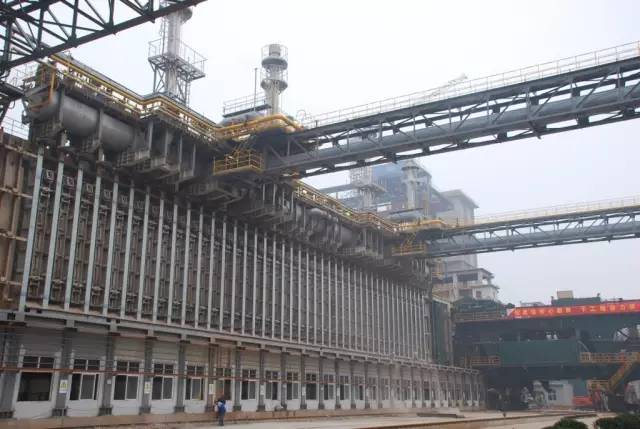What are the classifications of refractory materials for industrial kilns? Generally speaking, they can be divided into four types: refractory materials for glass tank kilns, refractory materials for cement kilns, castables for ceramic kilns, and refractory materials for coke ovens. For specific details, please refer to the following explanation by experts from a refractory material factory in Henan.
1.Refractory Materials for Glass Tank Kilns
Considering various factors that lead to the damage of kiln lining, such as chemical erosion, mechanical abrasion, temperature fluctuations, and high temperatures, the selection of kiln materials mainly includes the following series:
(1) Al2O3-SiO2 series, including clay bricks and silica bricks.
(2) Al2O3-ZrO2-SiO2 series, including zircon brick and electro-fused zircon corundum brick.
(3) ZrO2-SiO2 series.
(4) MgO-Al2O3, MgO-Cr2O3, and MgO-SiO2 series.
(5) Insulating materials.

2.Refractory Materials for Cement Kilns
Refractory materials for cement kilns are diverse and should be used in a comprehensive manner. The main types include:
(1) Alkaline refractory materials: These include magnesia-chrome bricks, magnesia bricks, spinel bricks, and dolomite bricks. Magnesia-chrome bricks are further categorized as ordinary magnesia-chrome bricks, direct-bonded magnesia-chrome bricks, and semi-direct-bonded magnesia-chrome bricks.
(2) Alumina-silica refractory materials: Apart from general clay bricks and high alumina bricks, special requirements exist for alumina-silica refractory materials used in cement kilns. These requirements include resistance to wear, alkalis, and temperature variations. Therefore, a series of special high alumina bricks have been developed, such as phosphate-bonded high alumina bricks, phosphate-bonded high alumina wear-resistant bricks, anti-spalling high alumina bricks, and alkali-resistant semi-acidic clay bricks.
(3) Insulating refractory materials: This category mainly includes silica insulation boards and lightweight insulation bricks.
(4) Castables: Castables for cement kilns include high-strength, high-alkali castables, anti-coating castables, low-cement refractory castables, specialized castables for kiln mouths, castables for coal injection pipes, specialized castables for tertiary air ducts, and abrasion-resistant castables.

3.Refractory Castables for Ceramic Kilns
The selection of refractory materials for the inner walls of ceramic kilns depends on the firing temperature of the products and requires high-temperature resistance.
(1) Clay refractory bricks are used at temperatures below 1300°C.
(2) High alumina bricks are used at temperatures between 1300°C and 1400°C.
(3) Silica bricks are used at temperatures between 1400°C and 1500°C.
(4) Magnesia-alumina bricks are used at temperatures between 1500°C and 1600°C.
(5) Corundum bricks are used at temperatures below 1800°C.

4.Refractory Materials for Coke Ovens
(1) Refractory materials for carbonization chambers: In the past, clay bricks were commonly used, but now there is a trend towards using high-quality high alumina bricks, silicon carbide bricks, and mullite bricks for construction.
(2) Refractory materials for combustion chambers: The combustion chamber shares the furnace wall with the carbonization chamber and uses the same bricks as the carbonization chamber.
(3) Refractory materials for the furnace roof: Around the coal charging holes on the furnace roof, clay bricks are used due to large temperature fluctuations, while other areas are lined with silica bricks.
(4) Refractory materials for the inclined chute: The inclined chute connects the combustion chamber with the regenerator, requiring a brick structure that is stable and can withstand thermal stress. Small coke ovens use clay refractory bricks, while medium and large coke ovens use silica bricks for construction.
(5) Refractory materials for the regenerator: In small coke ovens, the single-wall, partition wall, bottom, and checker brick structures of the regenerator are all constructed using clay bricks. In medium and large coke ovens, silica bricks are used for the middle and upper parts of the regenerator to ensure uniform expansion of the coke oven as a whole.
(6) Refractory materials for the small flue: The small flue is located at the bottom of the regenerator and connects to the main flue. The entire small flue is lined with clay bricks for construction.

5.Refractory Materials for Fluidized Bed Incinerators
The incineration temperature of a fluidized bed incinerator ranges from 750 to 870°C. Due to the boiling and turbulent nature of the materials (carrier and waste residues) inside the furnace, the lining material must be both heat-resistant and wear-resistant. In this furnace, a 250mm thick heat-resistant and wear-resistant castable is used for lining. The inner layer consists of a 150mm thick lightweight heat-resistant castable as the insulation layer. The outer layer (working layer) is cast with a 100mm thick phosphate-bonded high alumina castable [composition: bauxite clinker: low-calcium aluminate cement: aluminum hydroxide fine powder: aluminum phosphate solution at a ratio of 100:25:25:20-24 (wt)], or it can be constructed using lightweight insulation bricks and first-grade high alumina bricks (L2-65).

